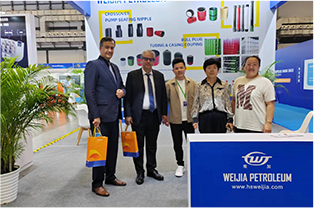- Afrikaans
- Albanian
- Amharic
- Arabic
- Armenian
- Azerbaijani
- Basque
- Belarusian
- Bengali
- Bosnian
- Bulgarian
- Catalan
- Cebuano
- Corsican
- Croatian
- Czech
- Danish
- Dutch
- English
- Esperanto
- Estonian
- Finnish
- French
- Frisian
- Galician
- Georgian
- German
- Greek
- Gujarati
- Haitian Creole
- hausa
- hawaiian
- Hebrew
- Hindi
- Miao
- Hungarian
- Icelandic
- igbo
- Indonesian
- irish
- Italian
- Japanese
- Javanese
- Kannada
- kazakh
- Khmer
- Rwandese
- Korean
- Kurdish
- Kyrgyz
- Lao
- Latin
- Latvian
- Lithuanian
- Luxembourgish
- Macedonian
- Malgashi
- Malay
- Malayalam
- Maltese
- Maori
- Marathi
- Mongolian
- Myanmar
- Nepali
- Norwegian
- Norwegian
- Occitan
- Pashto
- Persian
- Polish
- Portuguese
- Punjabi
- Romanian
- Russian
- Samoan
- Scottish Gaelic
- Serbian
- Sesotho
- Shona
- Sindhi
- Sinhala
- Slovak
- Slovenian
- Somali
- Spanish
- Sundanese
- Swahili
- Swedish
- Tagalog
- Tajik
- Tamil
- Tatar
- Telugu
- Thai
- Turkish
- Turkmen
- Ukrainian
- Urdu
- Uighur
- Uzbek
- Vietnamese
- Welsh
- Bantu
- Yiddish
- Yoruba
- Zulu
pup joint specifications
Understanding Pup Joint Specifications in Oil and Gas Industry
In the oil and gas industry, the transport of fluids under high pressure is a critical aspect of production operations. One of the vital components of the drilling and production processes is the pup joint, an essential piece of equipment that ensures the effective flow of fluids through the pipes. Understanding pup joint specifications is crucial for engineers and technicians to guarantee safe and efficient operations.
A pup joint is essentially a short length of pipe, usually not exceeding 20 feet, which is used to connect with other pipes or components in a drilling string, such as casing or tubing. These short members help accommodate changes in depth, adjust for designs that demand specific lengths, and serve as extensions for various pipe connections. Given their significance, the specifications of pup joints dictate their functionality, reliability, and overall safety in operations.
Key Specifications
1. Material Standards Pup joints are typically made from steel or other alloy materials to withstand the rigorous conditions of oil and gas operations, including high pressure and corrosive environments. Common specifications include API 5CT and API 5L, which define the material properties and manufacturing processes for seamless and welded steel pipes. The choice of material influences the strength, ductility, and corrosion resistance of the pup joints.
2. Dimensions Specifications related to dimensions (length, outer diameter, and wall thickness) are critical to ensure compatibility with existing piping and equipment. Pup joints can come in various sizes, but standard dimensions typically adhere to industry standards such as the American Petroleum Institute (API) classifications. This standardization helps maintain consistency and intercompatibility among various equipment across the industry.
3. Threading The ends of pup joints are often threaded to facilitate connections with other pipes. Standard threading types, such as API buttress or premium connections, are utilized to ensure tight sealing and leak prevention. The choice of threading also affects how easily the pup joints can be assembled or disassembled, impacting maintenance schedules and operational efficiency.
pup joint specifications

4. Pressure Ratings Pup joints come with specific pressure ratings that indicate the maximum allowable working pressure (MAWP) they can handle during operations. Based on the material and design, these ratings can vary significantly, and it is essential that the pressure ratings are appropriate for the specific application to prevent failures during service.
5. End Connections Pup joints can be manufactured with various end connections, depending on the operational requirements. These may include threaded ends, flanged ends, or welded connections. The selection of the appropriate end connection ensures reliable and safe integration into the existing pipeline system.
Quality Assurance
The manufacturing of pup joints must adhere to stringent quality assurance standards. Various testing methods such as ultrasonic inspection, X-ray examination, and hydrostatic testing are employed to ensure that the joints meet their specified mechanical and physical requirements. This is crucial because failures in pup joints can lead to significant safety hazards, including blowouts and environmental contamination.
Conclusion
Understanding pup joint specifications is fundamentally important in the oil and gas industry. The role of pup joints in connecting various components of the drilling and production systems cannot be overstated. By adhering to standardized specifications for material, dimensions, threading, pressure ratings, and end connections, operators can ensure the reliability and safety of their operations. Moreover, investment in quality assurance during the manufacturing process mitigates risks associated with failures, thereby protecting not only personnel but also the environment. As exploration and extraction activities continue to expand, especially in challenging environments, the importance of robust pup joint specifications will only increase, ensuring that oil and gas operations remain efficient and safe.
-
Tubing Pup Joints: Essential Components for Oil and Gas OperationsNewsJul.10,2025
-
Pup Joints: Essential Components for Reliable Drilling OperationsNewsJul.10,2025
-
Pipe Couplings: Connecting Your World EfficientlyNewsJul.10,2025
-
Mastering Oilfield Operations with Quality Tubing and CasingNewsJul.10,2025
-
High-Quality Casing Couplings for Every NeedNewsJul.10,2025
-
Boost Your Drilling Efficiency with Premium Crossover Tools & Seating NipplesNewsJul.10,2025







